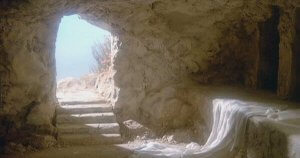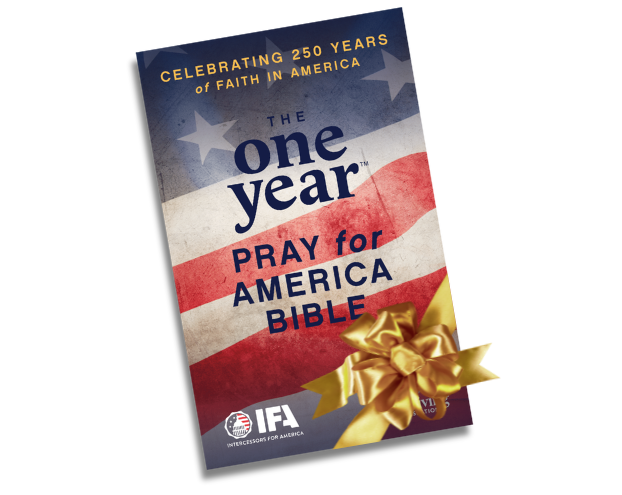WHY DID JESUS HAVE TO DIE ON THE CROSS?
CAN A CHRISTIAN NOT BELIEVE IN THE RESURRECTION?
HE IS RISEN INDEED!
ANTI-‘SANCTUARY STATE’ MOVEMENT PICKS UP STEAM IN CA
HUNDREDS TO TAKE PART IN PRAYER VIGILS AT ABORTION CLINICS THIS GOOD...
WHY DID JESUS HAVE TO DIE ON THE CROSS?
 Offer thanks to our Lord for paying a price that we could never pay for our eternal salvation.
Offer thanks to our Lord for paying a price that we could never pay for our eternal salvation.
“But he was wounded for our transgressions, he was bruised for our iniquities: the chastisement of our peace was upon him; and with his stripes we are healed.” (Is 53:5)
It isn’t clear why Jesus’ death had to be on a cross, although crucifixion was the cruelest manner of execution in Roman times, a fitting penalty for the sins of all humanity.
It is clear that crucifixion was the only death that would fulfill the Old Testament prophecies, the predictions, of what would happen to the Messiah.
A foreshadowing of Jesus’ crucifixion is recounted in Numbers Chapter 21. God had already delivered the people of Israel from slavery in Egypt. He had taken them safely across the Red Sea and drowned the Egyptian army that pursued them. Then He had provided them with water in the desert and miraculous food, called manna, which appeared on the ground like dew in the morning. He even helped them to defeat their enemies.
But the people grew impatient and started speaking against God and Moses, their leader. They complained that Moses had led them out to die. They said they hated the manna God gave them. Even though God had rescued them over and over, they didn’t believe He would help them. They chose hopelessness instead of faith, and they dishonored God’s name….
Then God sent poisonous snakes among them to punish them. Many Israelites were bitten and died. So the people went to Moses and admitted that they had sinned. They pleaded with Moses to ask God to send the snakes away.
In answer, God instructed Moses to make a bronze snake and place it on a pole. People who were bitten and looked at the bronze snake were healed.
Jesus referred to this incident in reference to His own mission. He said that He would have to be lifted up in the same way that Moses lifted a snake in the desert. Jesus would be held up on a pole (the cross) so that people who believed in Him could have eternal life (John 3: 14–15)….
The prophet Zechariah wrote:
The LORD, who stretches out the heavens, who lays the foundation of the earth, and who forms the spirit of man within him, declares . . . I will pour out on the house of David and the inhabitants of Jerusalem a spirit of grace and supplication. They will look on me, the one they have pierced, and they will mourn for him as one mourns for an only child, and grieve bitterly for him as one grieves for a firstborn son (Zech. 12: 10 NIV).
This passage not only predicted the manner of the Messiah’s death, but also the person who would die, the Lord God Himself.
Although we cannot be certain why God chose death by crucifixion for His Son, we do know that this manner of death was a fulfillment of the Old Testament prophecies about the coming Messiah. We also know that through His suffering, Jesus, God’s only Son, paid the penalty for the sins of the whole world, including yours and mine. (Excerpts from Jeanne Dennis’s article Why Did Jesus Have to Die on the Cross?)
Partner with Us
Intercessors for America is the trusted resource for millions of people across the United States committed to praying for our nation. If you have benefited from IFA's resources and community, please consider joining us as a monthly support partner. As a 501(c)3 organization, it's through your support that all this possible.


We use cookies to ensure that we give you the best experience on our website. If you continue to use this site we will assume that you are happy with it. Privacy Policy




Comments
“Jesus did many other things as well. If every one of them were written down, I suppose that even the whole world would not have room for the books that would be written” – John 21:25.
The Season of Easter is the high point of the Christian Church year. Traditionally, worshippers participate in an extended feast wherein the paschal candle is lit at every service as a sign of the risen Christ. Scripture readings highlight every Christian’s connection to the death and resurrection of Jesus. The scripture readings proclaim the power of the resurrection that gives strength in suffering, unity in diversity, consolation in sorrow, perseverance in adversity and faith in times of doubt. On this, the holiest day of the year and for the entire Season of Easter, many Christian’s greet each other with the words, “Alleluia! Christ is risen! Alleluia!”
Jesus Christ’s resurrection from the dead is one of the principal doctrines of the gospel.
If Christ be not risen, our faith is vain (1 Corinthians 15:14). The essential New Testament revelation balances on this as an historical fact. On the day of Pentecost, Peter argued the necessity of Christ’s resurrection from the prediction in Psalm 16 (Acts 2:24-28). Christ also clearly prophesied his resurrection (Matthew 20:19; Mark 9:9; 14:28; Luke 18:33; John 2:19-22). Thus we can preach that Jesus is alive; that He has risen as He said He would and that He is the Son of God as He claimed to be. Christ is alive! He is living today.
The Bible informs us that Jesus did appear many times after his death and resurrection.
The empty tomb – Resurrection Sunday – Matthew 28: 1-10, Mark 16: 1-8, Luke 24: 1-12, John 20: 1-9.
To Mary Magdalene at the garden – Resurrection Sunday – Mark 16: 9-11, John 20: 11-18.
To other women, “the other Mary,” Salome, Joanna, and others, as they returned from the tomb – Resurrection Sunday – Matthew 28: 9-10.
To Simon Peter alone – Resurrection Sunday – Luke 24: 34, 1 Corinthians 15: 5.
To the two disciples going to Emmaus – Resurrection Sunday – Mark 16: 12-13, Luke 24: 13-32.
To the ten disciples (Thomas being absent) in the upper room – Resurrection Sunday – Luke 24: 36-43, John 20: 19-25.
To the disciples again (Thomas being present) – Following Sunday – Mark 16: 14, John 20: 26-31, 1 Corinthians 15: 5.
To seven disciples when fishing at the Sea of Galilee – sometime later – John 21: 1-23.
To the eleven at an appointed place in Galilee – sometime later – Matthew 28: 16-20, Mark 16: 15-18.
More than 500 brethren – sometime later – 1 Corinthians 15: 6.
To James, but under unknown circumstances – sometime later – 1 Corinthians 15: 7.
To the apostles immediately before the ascension. They accompanied him from Jerusalem to Mount Olivet, and there they saw him ascend “till a cloud received him out of their sight” – Forty days after Jesus’ resurrection – Luke 24: 44-49, Acts 1: 3-8.
In addition to the above appearances, Christ will return by way of vision and appear to Stephen, several times to Paul, and finally to John to give him the final Revelation.
Paul at Damascus, speaks of it as an appearance of the risen Savior – several years later – Acts 9: 1-19, 22: 3-16, 26: 9-18, 1 Corinthians 9: 1, 15: 8.
Paul tells us in Galatians 1:17 that he went immediately into Arabia and then returned to Damascus and three years after his transforming vision of Jesus, he went up to Jerusalem to see the Apostles. During Paul’s 3 years in Arabia he received the Gospel from the Lord (Galatians 1:11-17). He made a visit to the Throne of God (2 Corinthians 12:1-4) where he saw things he was not permitted to reveal. In 1 Corinthians 15:3-8, when Paul recounted all the Lord’s post resurrection appearances, he included himself as one who had seen Him. So, at some point, he apparently did have a physical meeting with the Lord.
Stephen in his dying vision saw “Jesus standing on the right hand of God” – sometime later – Acts 7: 55-56.
John of Patmos experienced a vision of the resurrected Christ described in Revelation – many years later – Revelation 1: 12-20.
It is implied in the words of Luke (Acts 1:3) that there may have been other appearances of which we have no record.
2 Corinthians 13 cites that, “in the mouth of 2 or 3 witnesses every word shall be established.” The resurrection of Jesus Christ has been established as fact. The scriptures tell us of the many appearances of Christ and the witnesses who experienced the events encompassing the resurrection. In Christ we can be confident of our salvation, and in Christ we can be confident of our own resurrection.
The apostle John wrote in 1 John 5:13, “These things I have written to you who believe in the name of the Son of God, so that you may know that you have eternal life.” We should find the assurance of our salvation in the truth of God’s Word. We should have trust that we are saved based on the promises God has declared.
A final note: Ephesians 5:13-15
Children of Light
13 But all things become visible when they are exposed by the light, for everything that becomes visible is light. 14 For this reason it says, “Awake, sleeper, and arise from the dead, and Christ will shine on you.” 15 Therefore be careful how you walk, not as unwise men but as wise.
> .• `•.. > .• `•.. > .• `•.. >.•